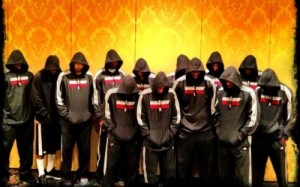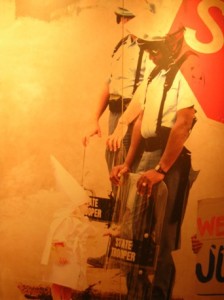This year I taught Introduction to Sociology. In order to discuss the power of discourse in society, I showed by students Chimamanda Adichie’s 2009 TED Talk called “The Danger of a Single Story“. My students were enamored. We had a fascinating and engaging discussion about single stories and the ways in which they affected my students’ lives and their engagement with the world around them. As a result of this phenomenal class, I developed the following assignment that I thought other sociologists would like to adapt to fit their courses.
Assignment Description and Instructions:
Chimamanda Adichie passionately and clearly teaches us the “danger of a single story” in her 2009 TED Talk. (You can find it here: http://www.npr.org/2013/09/20/186303292/what-are-the-dangers-of-a-single-story). Adichie demonstrates the ways in which our society is a collection of social stories or narratives, the most pervasive and controlling of which are/were manufactured by people with social power (the power elite).
Single stories can include stereotypes, ideologies and, what sociologists call, cultural hegemony. Stereotypes are overly simplistic generalizations about a subgroup of peoples. Those that “stick” often are constructed by people with power and used to limit opportunities for the stereotypes’ subjects. Ideologies are sets of ideas that shape how people make sense of the world around them. Depending on the social power of those holding and employing these ideologies, they can have significant impact on social structures and the life chances of others. Cultural hegemony is a system beliefs, norms, and values, shaped by the ruling-class, that justifies the status-quo as natural or normal, and thus makes it invisible. These discourses shape what is knowable and sayable in any given context.
For your papers, you will select a societal single story and analyze it. The first paper will examine a stereotype, the second an ideology, and the third a hegemonic narrative. For each, you will explore the story, its origins, its functions, and its impact on society. You will then examine the alternative stories: those told by the victims of the single story and/or those who are able to see through the discursive fog. Finally, you will propose ways to change the story both in your daily life and on a broader scale. As you move through these projects, also reflect on the ways in which stereotypes, ideologies, and hegemonic narratives are intertwined/not clearly separated.
Note: not all stereotypes and ideologies are examples of single stories. Those that are systemically affect the life chances of marginalized people in society and are not abutted by substantial alternative narratives. The stereotype or ideology you select for this paper must also be an example of a single story.
Although the story you choose is up to you, there are specific requirements for your analysis. In using a sociological lens to analyze the story you should engage with both data and social theories. Use your sociological imagination.
- The Story: Explain the single story you chose. To do this, outline its narrative and logic. What is the story? What social inequality or issue does it attempt to explain?
- Start the Story Earlier: Analyze where the story originated. Who created the story? What is the function/dysfunction of the story? What happens if you start the story here/earlier? How does the narrative shift?
- Explore its Impact on Identity, Perceptions of Others, Social Relations, and Social Institutions: How does the story affect people’s sense of self? How does it affect the way people understand each other? How does the story affect contemporary social relations? How does it contribute to the perpetuation of inequality in society? How has it become institutionalized?
- Listen to Alternative Stories: What is the story told by the subjects of the story? How does the story shift if you listen to these testimonies? What happens to the story if you follow the perspective of those most oppressed by it/and or those able to see through the narrative?
- Change the Story: How can the story be changed? What can you do in your daily life to contribute to shifting the narrative? What can be done on a broader scale?
Non-Service Learning Version
- Course Materials: Your paper should incorporate course materials to explore these concepts or ideas. This can include information from class discussion, films shown in class, and class readings. Use at least three sources from the course.
- Data and Evidence: You need to draw on specific examples in order to show the existence, origins, and impact of these stories. To do this you will need to use at least three outside sources. These sources must be academic in nature. If you cannot find it on Google Scholar or in academic journals, you should run the source by me.
- Include a reference page at the end of the paper that includes materials cited both from the course and your additional research.
Service Learning Version
- Course Materials: Your paper should incorporate course materials to explore these concepts or ideas. This can include information from class discussion, films shown in class, and class readings. Try to use at least three sources from class discussion.
- Data and Evidence: Rather than doing library research, your data will come from your service-learning site. It will involve your ability to think critically about what you see and to open your ears, mind, and heart to alternative possibilities. You will use stories from your experiences in order to answer the questions posed by this project. It may be the case that you have a hard time finding three stories that relate to your site. If this challenge (or any challenge) arises, talk to me.
Learning Outcomes
The primary goal of this activity is to foster critical thinking skills. It enables students to think reflectively about social stories, whether they be stereotypes, ideologies, or hegemonic narratives, and to deconstruct them. Students will develop skills they can use throughout their lives to see through historical forces and constructed discourse: including the essential ability to listen to subaltern voices. Finally, this assignment empowers students to think of constructive ways to challenge “single stories” in their social networks and broader communities.
Note: Thought not a requirement, you may want to consider selecting related stereotypes, ideologies, and hegemonic narratives so that you can also examine how they are related and how power flows between them.
Evaluation Criteria (based on presence and quality of required elements)
- Paper includes a strong organizing theme (the story) presented in a clear thesis.
- Thesis/theme is developed and supported throughout the paper.
- Paper sincerely and analytically discusses the nature of the story.
- Paper sincerely and analytically discusses the origins and intentions/functions of the story.
- Paper sincerely and analytically discusses the impact of the story on peoples’ identity, understandings of each other, and broader social relations (including institutions).
- Paper sincerely and analytically discusses the alternative stories told by those marginalized and/or those able to see through the fog of hegemony.
- Paper sincerely and analytically discusses possibilities for change in one’s life, community, and broader society.
- Paper is well written, reflective, and interesting.
- Paper includes required citations



